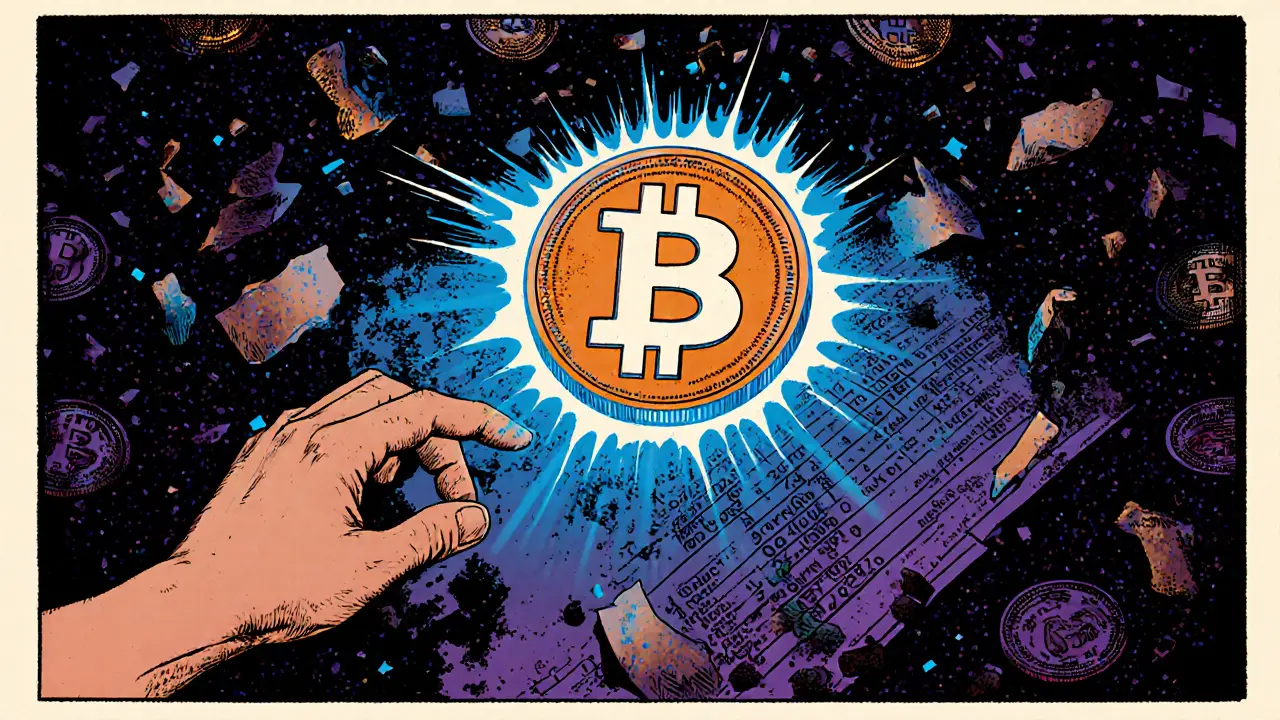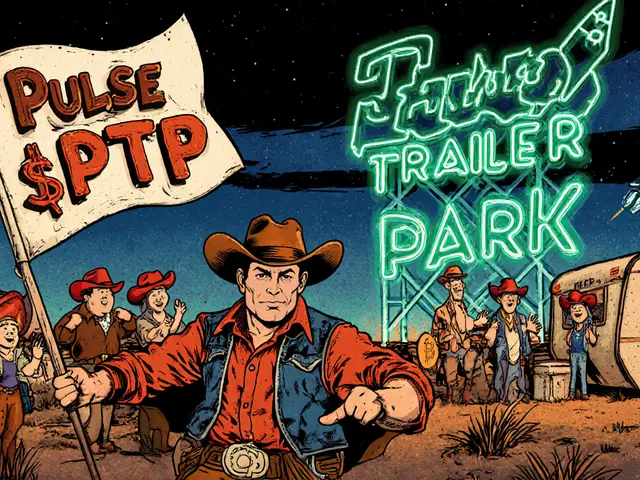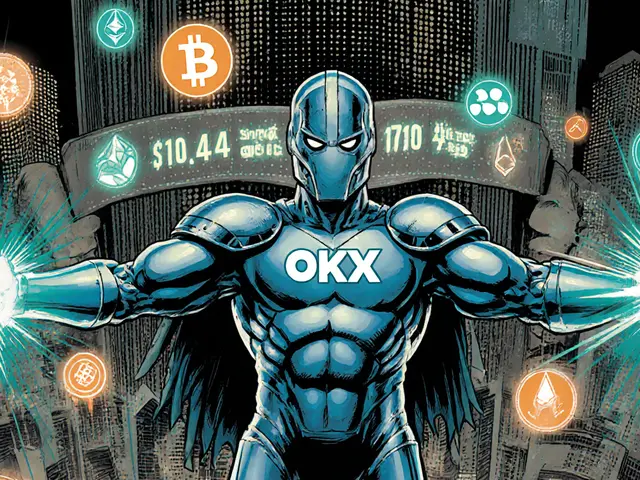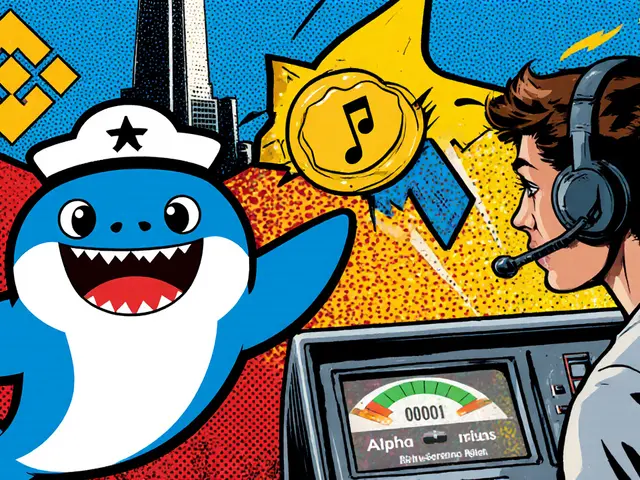
ERC-721 Gas Cost Calculator
Calculate your ERC-721 minting costs based on current Ethereum network conditions.
Note: Gas prices fluctuate constantly. These are estimates only.
When you buy a digital artwork or a virtual sneaker, how do you know it’s truly yours? Not just a screenshot, not a copy - but the one and only version? The answer lies in ERC-721, the standard that made true digital ownership possible on Ethereum.
What Is ERC-721?
ERC-721 is a technical rulebook for creating unique tokens on the Ethereum blockchain. Unlike Bitcoin or Ether, which are interchangeable (one ETH is always equal to another ETH), ERC-721 tokens are one-of-a-kind. Each has a unique ID, and no two are the same. Think of them like digital collectibles - a rare baseball card, a signed concert ticket, or a one-of-a-kind painting. Only one exists, and its ownership is permanently recorded on the blockchain.
This standard was proposed in January 2018 by a group of developers including William Entriken and Dieter Shirley. Before ERC-721, blockchains could only handle identical tokens (like ERC-20 coins). There was no way to prove you owned a specific digital item - until ERC-721 changed everything.
How ERC-721 Works Under the Hood
At its core, ERC-721 is a smart contract with nine required functions and three events. These aren’t just technical details - they’re what make ownership real.
- balanceOf(address) tells you how many NFTs a wallet holds.
- ownerOf(uint256 tokenId) lets you find out who owns a specific token.
- transferFrom and safeTransferFrom let owners send tokens to others - but safeTransferFrom checks if the receiver can handle NFTs, preventing accidental loss.
- approve and setApprovalForAll let you give permission to someone else to sell or move your NFT without handing over your private key.
Every time an NFT changes hands, the contract emits a Transfer event. When someone is granted permission to manage your NFT, an Approval event fires. These events are public, permanent, and verifiable by anyone.
Each token has a unique ID - a number from 0 to 2²⁵⁶ - 1. That’s more possible IDs than stars in the observable universe. In practice, most collections use sequential IDs like 1, 2, 3... up to 10,000. But the system allows for any number, making it possible to mint tokens out of order or skip IDs entirely.
Metadata and the TokenURI Function
An ERC-721 token isn’t just a number. It has meaning. That’s where metadata comes in.
The tokenURI function returns a link - usually to a JSON file stored on IPFS (InterPlanetary File System) or Arweave. This file contains the NFT’s name, description, image, attributes, and other details. For example, a CryptoPunk’s tokenURI points to data like: {"name": "CryptoPunk #4156", "image": "ipfs://Qm...", "attributes": [{"trait_type": "Skin", "value": "Zombie"}]}
Here’s the catch: if that JSON file is hosted on a regular server (like Amazon S3), and the server goes down, your NFT becomes a broken link. That’s why 78% of projects use decentralized storage like IPFS, where files are distributed across thousands of nodes and can’t be censored or deleted.
ERC-721 vs ERC-20: The Key Difference
It’s easy to confuse ERC-721 with ERC-20. But they’re built for completely different purposes.
| Feature | ERC-721 | ERC-20 |
|---|---|---|
| Token Type | Non-fungible (unique) | Fungible (interchangeable) |
| Each Token Has | Unique ID | Same ID as all others |
| Use Case | Art, collectibles, game items | Currency, utility tokens |
| Transfer Method | By token ID | By amount |
| Metadata | Required for meaning | Optional |
Imagine you have 100 USDT (ERC-20). You can give any 50 to a friend - they’re all the same. But if you have 100 ERC-721 tokens, each one is different. Giving token #4156 is not the same as giving #7892. One might be rare. One might be worthless. That’s the power of uniqueness.

Why ERC-721 Dominates the NFT Market
As of 2023, over 95% of all NFTs on Ethereum use ERC-721. Why? Because it’s the only standard that’s been battle-tested across millions of transactions.
Marketplaces like OpenSea and Rarible were built around ERC-721. Wallets like MetaMask support it out of the box. Tools like OpenZeppelin’s contract library make it easy to deploy secure contracts. Even big brands like Nike, Starbucks, and Adidas use it for their digital collectibles.
It’s not just about volume - it’s about trust. NFTs worth over $10,000 are almost always on ERC-721. Why? Because the ecosystem around it is mature. Audits are common. Liquidity is high. Buyers know what they’re getting.
Gas Costs and Efficiency Challenges
ERC-721 isn’t perfect. The biggest complaint? Gas fees.
Minting one ERC-721 token costs between 45,000 and 65,000 gas. Minting 10? That’s 1.2 million gas - expensive if you’re a small creator. That’s where extensions like ERC-721A come in.
ERC-721A, created by Art Blocks in 2021, optimizes batch minting. It reduces gas costs by 30-50% by grouping multiple token transfers into a single transaction. It’s now used by over 40% of new NFT projects. But it’s not a replacement - it’s a smarter way to use ERC-721.
Even better news: Ethereum’s Dencun upgrade in early 2024 cut gas costs for NFTs by 10-15%. That’s a big win for creators.
Common Mistakes and Security Risks
Many developers break ERC-721 by skipping critical steps.
- Forgetting to implement tokenURI - your NFT won’t show up on OpenSea.
- Using transferFrom instead of safeTransferFrom - if you send an NFT to a contract that doesn’t support it, the token gets stuck forever.
- Storing metadata on HTTP servers - if the server dies, your NFT becomes a blank image.
Security audits show that 23% of ERC-721 contracts in 2022 had reentrancy bugs - a flaw that lets hackers drain funds. OpenZeppelin’s pre-audited libraries fix this. Most smart developers use them.
Metadata manipulation is the #1 security issue. If someone changes the image or attributes linked to your NFT, it can look like a different asset. That’s why NIST’s 2024 report flagged it as the top risk in NFT incidents.

What’s Next? Extensions and Evolution
ERC-721 isn’t frozen in time. New standards are building on it.
- ERC-721A - gas-efficient batch minting
- ERC-721P - lets multiple people own parts of one NFT
- ERC-6551 - turns each NFT into its own smart wallet. Now your NFT can hold other tokens, interact with dApps, and even pay its own gas.
ERC-6551 is especially powerful. Imagine owning a virtual land NFT - and that NFT itself holds a sword, a shield, and some ETH to pay for repairs. That’s not science fiction. It’s live on Ethereum today.
Real-World Use Cases
ERC-721 isn’t just for JPEGs.
- Digital Art - Beeple’s $69 million NFT, CryptoPunks, Bored Apes - all ERC-721.
- Gaming - items in Axie Infinity, Decentraland, and The Sandbox are ERC-721 tokens you truly own.
- Real Estate - companies are tokenizing physical property. A house in Miami could be represented by one ERC-721 token, with ownership tracked on-chain.
- Event Tickets - live concerts and sports events now use NFT tickets to prevent fraud and reselling.
- Identity - universities issue diplomas as ERC-721 NFTs. Employers can verify them instantly.
Nike’s .Swoosh platform processed 1.2 million ERC-721 transactions in Q3 2023 with zero failures. That’s enterprise-grade reliability.
Should You Use ERC-721?
If you’re building a project where uniqueness matters - art, collectibles, access passes, digital identity - then yes. ERC-721 is the gold standard.
But if you’re just creating 10,000 identical tokens for a loyalty program? Maybe use ERC-20. Or if you’re on a budget and minting thousands? Start with ERC-721A.
For most people, the answer is simple: if you want your digital asset to be truly ownable, verifiable, and tradable across platforms, ERC-721 is the only choice.
It’s not just a technical standard. It’s the foundation of a new kind of ownership - one that doesn’t rely on corporations to validate your rights. It’s yours. On the blockchain. Forever.
What makes ERC-721 different from other NFT standards?
ERC-721 is the first widely adopted standard for unique digital assets on Ethereum. Unlike newer standards like Solana’s SPL or Polygon’s optimized versions, ERC-721 has deep integration with wallets, marketplaces, and tools. It’s the most tested and trusted, with 95% of Ethereum NFTs built on it. While alternatives may be cheaper, ERC-721 offers unmatched compatibility and security.
Can ERC-721 tokens be copied or duplicated?
The digital file (like a JPG) can be copied - anyone can screenshot or download it. But the ownership record on the blockchain cannot. Only one person owns the official token with its unique ID. That’s the difference between a copy and the original. Think of it like a signed Picasso painting - anyone can print it, but only one exists as the authentic version.
Why do some NFTs have no image or show as blank?
This happens when the metadata (stored in the tokenURI) is hosted on a broken or centralized server. If the link points to a website that shuts down, the image disappears. The solution is using decentralized storage like IPFS or Arweave, which keeps files alive even if one server fails. Over 78% of projects now use these services to avoid this issue.
Is ERC-721 only for art and collectibles?
No. While art and collectibles got the most attention, ERC-721 is used for game items, event tickets, real estate deeds, diplomas, and even car titles. Any asset that needs unique, verifiable ownership can use ERC-721. Companies like Nike and Starbucks use it for loyalty programs. Universities use it for diplomas. It’s a tool for proving ownership - not just for art.
How do I create my own ERC-721 NFT?
Start by using OpenZeppelin’s ERC721 contract library - it handles the complex parts safely. Write your metadata (name, image, traits) as a JSON file and upload it to IPFS. Then deploy the contract using a tool like Hardhat or Foundry. Make sure to implement tokenURI correctly and use safeTransferFrom. Test on a testnet first. Most developers complete this in 8-12 hours with the right tools.
Are ERC-721 NFTs a good investment?
Not necessarily. NFTs are not investments - they’re collectibles. Their value comes from community, rarity, and utility, not guaranteed returns. Many ERC-721 NFTs have lost value. But for creators and users who value ownership and access, they’re powerful tools. Focus on utility and culture, not speculation.






There are 19 Comments
Derajanique Mckinney
Herbert Ruiz
Saurav Deshpande
Pranav Shimpi
Dr. Monica Ellis-Blied
gurmukh bhambra
Sheetal Tolambe
Sunny Kashyap
james mason
Anna Mitchell
Will Barnwell
Lawrence rajini
Matt Zara
Jean Manel
William P. Barrett
Cory Munoz
Jasmine Neo
Ron Murphy
Prateek Kumar Mondal
Write a comment
Your email address will not be published. Required fields are marked *